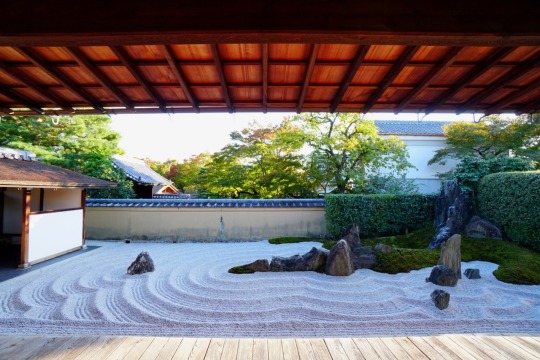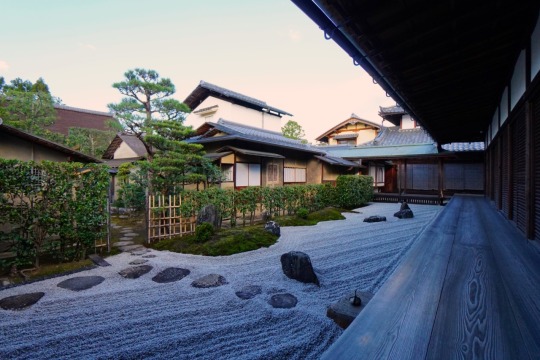#Zuihoin
Video
Zen moments por Patrick Vierthaler
#大徳寺#瑞峯院#禅#初秋#禅寺院#禅寺#京都#日本#庭園#Japan#Kyoto#Daitoku-ji#Zuihoin#Zuihou-in#Zen#temple#tempel#garden#garten#karesansui#rock#stone#Steingarten#Japanese#Japanischer#LEE#100#Grad#ND#soft
31 notes
·
View notes
Text


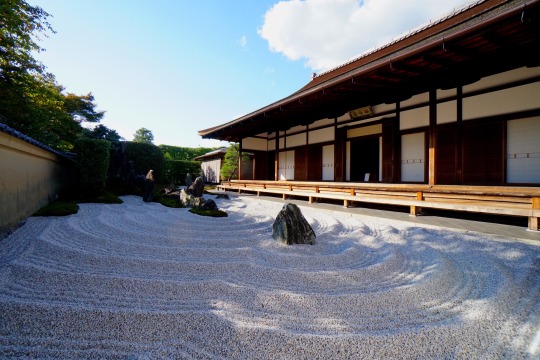



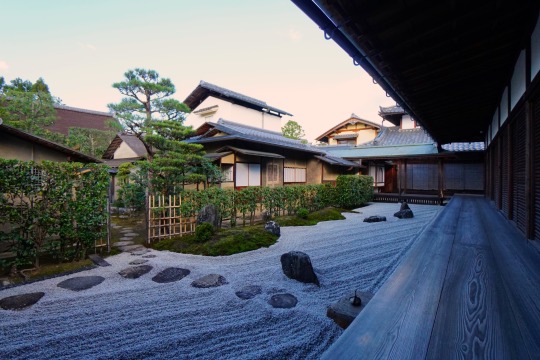

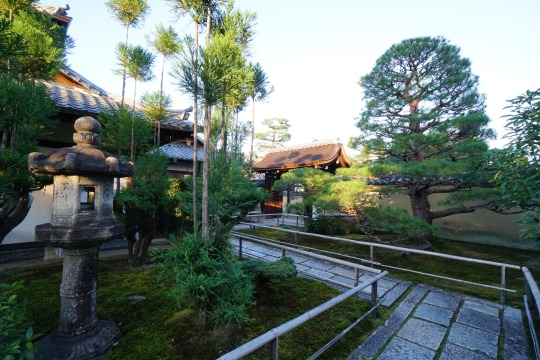

京都 大徳寺 瑞峯院
kyoto daitokuji zuihoin temple
258 notes
·
View notes
Photo
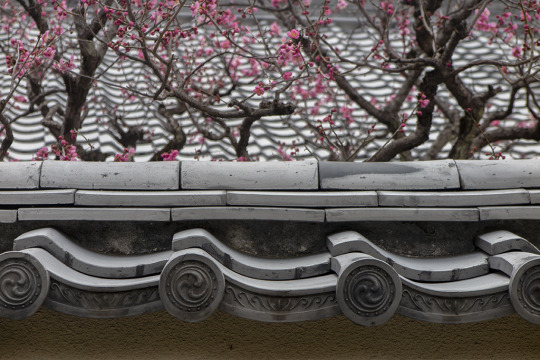
Daitokuji Temple, Kyoto
5 notes
·
View notes
Photo
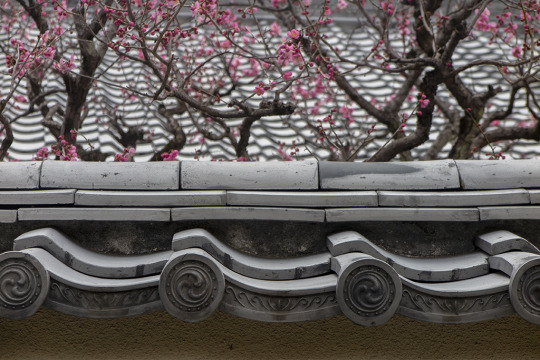
Daitokuji Temple, Kyoto
1 note
·
View note
Photo

No.675 at Zuihoin, Daitokuji Temple, Kyoto, Japan
234 notes
·
View notes
Photo

LEICA M8+CANON LENS 35mm f:3.2
瑞峯院の方丈。
3 notes
·
View notes
Video
youtube
[動画・video]瑞峯院の境内:Precincts of Zuiho-in temple
0 notes
Photo

📸大徳寺 瑞峯院庭園 [ 京都市北区 ] Daitoku-ji Temple Zuiho-in Garden, Kyoto の写真・記事を更新しました。 ーー戦国大名・大友宗麟が開いた寺院に #重森三玲 が作庭した枯山水庭園“独坐庭”“閑眠庭”。建築は国指定重要文化財。 ........ 瑞峯院は京都の大寺院の一つ『大徳寺』の境内南部に位置する塔頭寺院。数多くある大徳寺内の寺院で通年で拝観可能な庭園の一つ。 重森三玲の作庭による2つの #枯山水庭園 “独坐庭”、“閑眠庭”が見られるほか、室町時代に建立された本堂・唐門・表門が #国指定重要文化財 となっています。つい先日、約4年ぶりに拝観! . 室町時代の1535年(天文4年)にキリシタン大名としても知られた戦国大名 #大友宗麟 が大友家の菩提寺として創建。 開山となった大満国師は上杉謙信の景虎時代に禅の指導にあたった人物だそう。先に挙げた国重文の建造物はその当初から残るもので、中でも本堂は室町時代の貴重な方丈建築。 . 方丈の表と裏に面する2つの枯山水庭園は1961年(昭和36年)に重森三玲により作庭されたもの。 . ■独坐庭(どくざてい)(*1・2枚目) 寺名“瑞峯”をテーマにした蓬莱山式枯山水庭園。重森三玲らしい立石の石組を頂点として、砂紋によって表現された荒波🌊を受ける険しい岩礁の半島が表現されています。この砂紋、4年前に訪れた時とほぼ同じなのですが、毎朝ご住職により描かれているのだそう。 . その公式の説明以上のことはないのだと思うけど、『龍吟庵庭園』のデザインを思い返すと、岩礁を表した細い長い石組は海から龍が現れそうなデザインでもある🐲 . ■閑眠庭(かんみんてい)(*4枚目) 別名「十字架の庭」。キリシタン大名だった大友宗麟にちなんで、縦に4つ、横3つの石を配し十字架を表したもの✝️ あと前回訪れた時は冬だったのでシンプルな石庭という雰囲気だったけれど、今回はキキョウが花を咲かせて石庭のアクセントになっていました。 . そして。これまで訪れた時にはあまり意識していなかったけど、大徳寺が茶道・茶の湯と縁が深い流れを瑞峯院もくんでいて、3つの茶室があります🍵 まず閑眠庭と隣接する“安勝軒”。こちらは表千家第12代・惺斎宗匠好みの茶室で、大徳寺産内で唯一の逆勝手席なんだそう。かつて大友宗麟の時代に同名の茶室があったものの江戸時代中期に廃され、この茶室は同じ名前を冠したもの。 . 独坐庭の奥にあるのが“餘慶庵”。表千家8代目 #啐啄斎 宗匠好みの席を写したもので、毎月28日には釜がかかっているそう(在釜ってやつ?)。 気になるのがその前の #露地庭 (*3枚目)。待合の10個ぐらいの赤い鞍馬石が配されているデザインがとてもユニークに感じるし、そこからの苔〜台杉と刈込みで独坐庭を遮蔽している感じとかもすごくいいんだけど、当初重森三玲が手掛けた露地庭はまた別のデザインだったとWikipediaにはあります。本で写真探してみよ。 . その他、国宝茶室「待庵」の写しである“平成待庵”も(こちらは予約が必要)。石庭を眺めていたらご住職が声を掛けてくださって、「朝にお経を読んだ後にお茶を飲んでいるから、いつか朝早くおいでよ」とおっしゃってくださったので、いつかお茶をしに伺いたい!(朝弱いんですよねえ…) . ・・・・・・・・ 🔗おにわさん紹介記事: https://oniwa.garden/daitoku-ji-temple-zuihoin-garden-%e5%a4%a7%e5%be%b3%e5%af%ba%e7%91%9e%e5%b3%af%e9%99%a2%e5%ba%ad%e5%9c%92/ ーーーーーーーー #庭園 #日本庭園 #京都 #japanesegarden #japanesegardens #jardinjaponais #japanischergarten #jardinjapones #jardimjapones #японскийсад #landscapedesign #zengarden #kyotogarden #japanarchitecture #京都庭園 #京都市 #visitkyoto #露地 #枯山水 #karesansui #shigemorimirei #mireishigemori #おにわさん #oniwasan (瑞峯院) https://www.instagram.com/p/CCbGpKjhVNI/?igshid=1chsbvvtbnci6
#重森三玲#枯山水庭園#国指定重要文化財#大友宗麟#啐啄斎#露地庭#庭園#日本庭園#京都#japanesegarden#japanesegardens#jardinjaponais#japanischergarten#jardinjapones#jardimjapones#японскийсад#landscapedesign#zengarden#kyotogarden#japanarchitecture#京都庭園#京都市#visitkyoto#露地#枯山水#karesansui#shigemorimirei#mireishigemori#おにわさん#oniwasan
0 notes
Photo

Despite having 2,000 temples & shrines, most tourists to Kyoto, Japan visit the same dozen or so big name points of interest and high-profile UNESCO World Heritage Sites. In theory, this leaves about 1,980 hidden gems you can visit to avoid the crowds.
However, as we discuss in our Top 100 Temples & Shrines in Kyoto, Japan, not all of those are worth a tourist’s time. To the contrary, we identify 52 that are very good or better. While it’s a far cry from 2,000 options, that’s still a lot of temples and shrines in one city. The idea is giving you options for calling an audible on weekends, holidays, or peak tourist season when things are just too busy and congested at Fushimi Inari, Arashiyama Bamboo Grove, Kiyomizudera, Golden Pavilion, and so on.
In this post, we narrow our top 100 list even further, sharing with you the creme de la creme of that ‘top 52’ that seldom draw crowds and are relatively easy to access from Kyoto’s major tourist areas. Their overall ranking on that top 100 list included in parentheticals and you can click on each temple or shrine’s name to read and see more photos in our full post about it.
Going forward, finding these bastions of serenity–the essence of the Kyoto experience–will be more important than ever. Japan tourism numbers continues to spike and that trend is only going to continue with the Tokyo 2020 Olympics primed to drive even more visitors.
Unfortunately, on a short trip to Kyoto, there is no way to successfully avoid crowds at every major temple. There simply aren’t enough mornings and late afternoons before and after the tour buses and hordes of visitors arrive. You’ll either have to deal with crowds midday, or zig when others zag, visiting some of the great hidden gem temples & shrines on this list…
Yoshida Shrine ( start with one of three locations clustered together a stone’s throw from the main tourist area of Higashiyama. Yoshida Shrine is part shrine and part public park. I’m not too proud to admit that I’ve gotten lost in here, and Google Maps seems to be little help in navigating the meandering paths.
The good news is that my favorite spot here is the huge torii gate at the entrance and the line of torii gates visible from the landing at the top of the stairs. So, you shouldn’t get lost photographing those. If you’re willing to venture further, Saijosho-Daigengu is one of the sub-shrines here, and it features striking architecture unlike anything I’ve seen elsewhere in Japan. (Unfortunately, it’s only open on the first of every month and holidays.)
Komyo-in Temple ( – A small sub-temple of Tofukuji that’s so small and hidden you might not even notice it from the street. Komyoin Temple consists of a series of interconnected rooms, each of which offers a different perspective into the karesansui, or dry landscape garden, for which Komyoin Temple is known.
Despite its ranking, Komyoin Temple is a Kyoto highlight for us, and represents one of the most serene and truly magical experiences you can have in Kyoto. It’s such an under the radar gem it’s left unattended, and you’re unlikely to encounter anyone else here outside of fall colors season.
Shinnyodo Temple ( This under-the-radar and free temple makes for a quick but satisfying stop while walking between Yoshida Shrine and Kurodani Temple. It also makes our Top 10 Fall Color Spots and 10 Best Hidden Gem Photography Spots lists for Kyoto, which should speak to its impact.
Shinnyodo Temple is stunning during both fall colors and cherry blossom seasons, and it’s also a great place to decompress and enjoy the serenity of the temple buildings and nature. It’s small, but there’s plenty of beautiful details beyond that striking pagoda that beacons visitors.
Kurodani Temple ( Another free temple situated in the Yoshida Hill area, that’s just far enough removed from the touristy side of Kyoto that it draws very few visitors. The fact that Kurodani Temple is a peaceful hidden gem is something of a surprise. It’s large and sprawling, visible from a distance, and features some eye-catching architecture.
Nevertheless, we’ve seen only a few other tourists total in our several visits here. Most of the people at Kurodani Temple are literally passing through–using the temple as a shortcut coming from work or school. Its scattering of other visitors seem to be neighborhood residents treating Kurodani as a functioning temple, which gives it a sense of authenticity you won’t find at many other big temples in Kyoto.
Enkoji Temple ( – An out of the way temple that’s actually pretty easy to access via the Eizan Kurama Line on your way to or from Kuramadera (see our 1-Day Northern Kyoto Itinerary for more on this), Enkoji Temple is great for its diversity and details.
Some of these features include a mini bamboo grove, great scenic vista, stunning buildings, a cool dry landscape garden, and a wealth of small touches. Enkoji becomes more popular during fall (it’s one of Kyoto’s most accessible mountain temples, making it a great spot for great autumn foliage), but it’s well worth visiting any time of year.
Honenin Temple ( Entirely free, easy to access from the (also free) Philosopher’s Path, and a calm diversion from the crowds, Honenin Temple is highly recommended. Even though it’s not a huge or high-profile temple, Honenin packs a powerful punch.
The thatch-roofed Main Gate has a sense of restrained beauty, and upon entering down through it, you’ll see the “Byakusadan – Terrace of White Sand.” These are twin white sand mounds with seasonal designs etched on top, surrounded by moss. Other buildings provide a lot to love at Honenin Temple.
Jojakko-ji Temple ( – The chameleon-like beauty of Jojakkoji Temple is truly a sight to behold. It temple looks totally different under the winter whites of snow, floral pinks of spring blooms, lush green of summer moss, or fall’s fiery reds. It’s most famous for its autumn foliage, and that’s the one time of year you’ll encounter crowds at Jojakkoji Temple.
The temple buildings here are situated on a looping path along the slope of the Arashiyama mountains. In terms of architecture, there’s a lot of interest, including the iconic thatched roof Deva Gate and a pagoda with a unique look. There’s really a lot to see, and the view of Kyoto as you venture into higher elevations is worth the effort.
Hojo Garden at Tofukuji Temple ( has many famous gardens, and at Tofukuji Temle, you get 4 for the price of 1 with entrance to Hojo Garden! While Tofukuji Temple is a popular stop for other reasons (including its free outer area and popular fall colors viewing along Tsutenkyo Bridge), its Hojo Garden that is the big, peaceful draw for us.
The designer of these gardens, Shigemori Mirei, called them ‘concept gardens containing abstract expression’ with each evoking a different scene. Even before you read about their meaning, the Hojo Garden’s designs are visually-arresting and thought provoking. It’s a satisfying experience to sit before each of these, and peel back the layers, noticing the minutiae of their brilliant designs. Much like so many Kyoto gardens, these are ostensibly simple and cleanly designed, but there’s much more than meets the eye.
Eikando Temple ( – Conveniently situated between the southern end of the Path of Philosophers and just north of Nanzenji, which means Eikando Temple is almost certainly a spot you’ll walk past during your time in Kyoto. It’s yet another temple laid out in the foothills of the Higashiyama mountains, with a ton of interesting features to see.
With that said, Eikando is anything but a hidden gem in November through mid-December. During the heart of fall colors season, it’s one of the biggest draws in Kyoto. Domestic Japanese tourists show up here in large numbers, and Eikando even does special evening openings (that are also packed) to accommodate demand.
Otagi Nenbutsu-ji Temple ( – This temple in Arashiyama has a collection of 1,200 Rakan Buddhist statues that were carved by amateurs, with the result being a surplus of quirky statues each with their own personality. You’ll end up spending a lot of time looking and taking photos of them, making for a satisfying visit to this relatively compact temple.
Our 1-Day Western Kyoto Itinerary covers the walk to Otagi Nenbutsuji Temple, and I’d recommend going by foot over taking the bus. The residential area is lovely and contains some nice architecture. Plus, there are a few other under-the-radar temples along the way.
Daitokuji Temple ( sprawling temple complex is highlighted by the Chokushimon Gate from Kyoto’s Imperial Palace, the Karamon (Chinese Gate), and Sammon Main Gate in its free grounds. There are also several halls that can be viewed, but not entered.
The highlight of Daitokuji Temple is its 24 sub-temples, some of which are open to the general public and some of which are privately owned. Zuihoin Temple is my top recommendation among these; it’s one of my favorite rock gardens in Kyoto. One I do not recommend is Daisenin Temple, which has suffocating rules and staff to enforce an unnecessary no-photography rule.
Daikakuji Temple ( This temple offers a large free area outside of its main grounds that include a pagoda, other buildings, and a huge pond. There are many trees around the pond that make Daikakuji a popular sakura and foliage location in Kyoto.
Inside the temple, you’ll find a series of buildings connected by elevated wooden walkways and covered corridors. Entrance to the inner area of Daikakuji Temple requires paying the admission fee. If you make the trek out to Daikakuji Temple, you should absolutely pay the entrance fee–it’s well worth it.
Yoshiminedera Temple ( – This one requires some effort and planning, as getting here requires good timing and strategy (which we cover in our post about the temple). With that said, Yoshiminedera Temple is highly recommended. For your efforts, you’ll be rewarded with sprawling mountain temples that have a wealth of diverse and photogenic buildings, details, statues, and breathtaking views.
We’ve visited several times, each time spending nearly a half-day doing the huge mountain loop, taking our time to stop at each of the two-dozen locations on the map. On each of our visits, there were fewer than 10 other visitors (at leas that we could see), and the natural beauty was stunning. Oh, and one time we saw a (pissed off) wild macaque monkey banging around some bamboo.
Kuramadera Temple ( Similar to Yoshimindera, except on the exact opposite side of Kyoto. We absolutely love Kuramadera Temple. It’s also another one that’ll take some effort, as visiting Mount Kurama and its surrounding village is usually considered a half-day trip from Kyoto. It’s worth it, especially if you visit other stops along the way, such as Enkoji Temple (above).
This Kyoto’s best and “truest” mountain temple and it takes approximately 45 minutes to climb from the main entrance to Kurama-dera’s main buildings. This is a maintained path, but can be moderately steep at times. There is also a cable car that bypasses some of the path. Walking is the way to go, as the scenery is beautiful and the way the temple’s features are incorporated into the mountainside is wonderful.
Fushimi Inari’s Secrets ( – The thing I love about Fushimi Inari is that it has so much range. I’ve visited dozens of times, and see new things with each visit. It also has great range in the crowds you’ll encounter. At one exact moment in time, there can be spot that are elbow-to-elbow with people, and areas where there’s absolutely no one.
Most of the latter locations are near the top of the mountain, where it’s even possible to snap quick photos of the torii tunnels without anyone in the frame. The Fushimi Inari “Secret” Bamboo Forest (which we cover how to find in this post) is one of the few uncrowded locations at the base of the mountain.
While these are some of my favorite lesser-known spots in Kyoto, this list really just scratches the surface. Even as Kyoto crowds swell, and visitors swarm to the beautiful city, the vast majority of temples and shrines are relative hidden gems. Visitors prefer the headliner points of interest, and while those temples certainly are popular for good reason, I’ve come to appreciate hidden gems more. They offer a contemplative atmosphere and calm you won’t find at the most popular spots, and that’s the true essence of Kyoto.
If you’re planning a trip to the Japan that includes Kyoto, we recommend starting by consulting our Ultimate Guide to Kyoto, Japan to plan all aspects of our vacation. You should also check out our other posts about Japan for ideas on other places to visit!
Your Thoughts
Have you visited Kyoto, Japan? Do you have any less-popular temple and shrine recommendations? Any thoughts or tips of your own to add? Does visiting this spot in Kyoto interest you? Hearing your feedback about your experiences is both interesting to us and helpful to other readers, so please share your thoughts or questions below in the comments!
The post Hidden Gem Temples & Shrines in Kyoto, Japan appeared first on Travel Caffeine.
#32)</strong> – We’ll#30)</strong>#28)</strong> –#23)</strong> –#20)</strong>#22)</strong> –#19)</strong>#18)</strong> –Kyoto#17)</strong>#16)</strong>#13)</strong> – This#8)</strong> –#4)</strong>#2) </strong>–#1)</strong>
0 notes
Photo

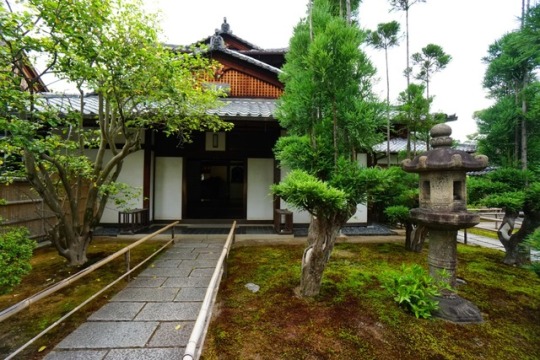
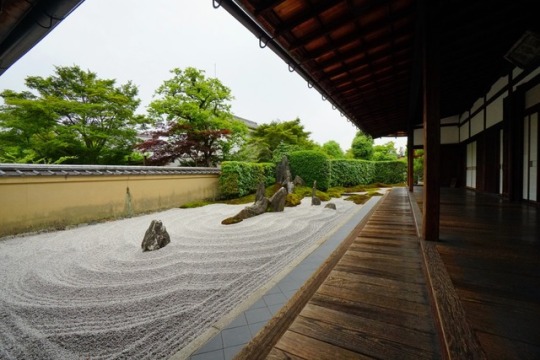





京都 大徳寺塔頭 瑞峰院
kyoto daitokuji zuihoin
102 notes
·
View notes
Photo

Daitokuji Temple, Kyoto
4 notes
·
View notes
Photo
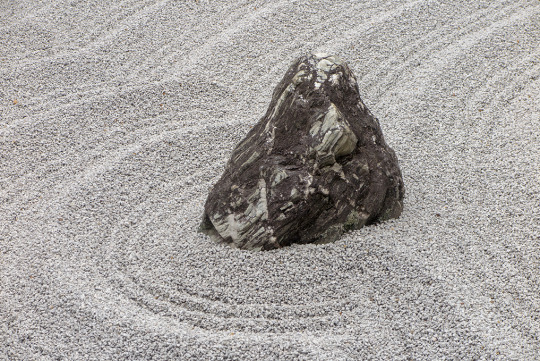
Daitokuji Temple, Kyoto
1 note
·
View note
Photo
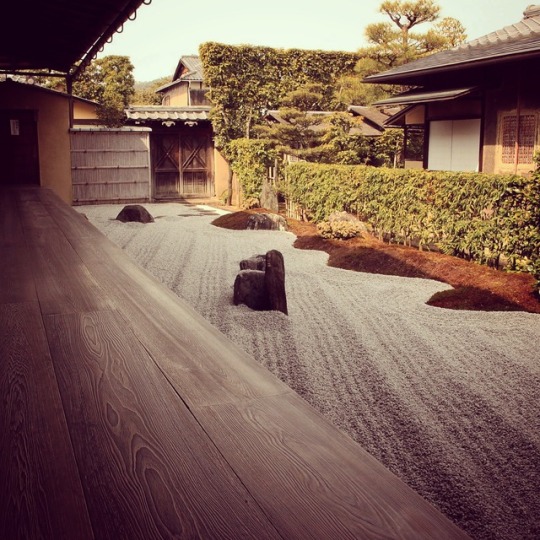
No.672 at Zuihoin, Daitokuji Temple, Kyoto, Japan
86 notes
·
View notes

